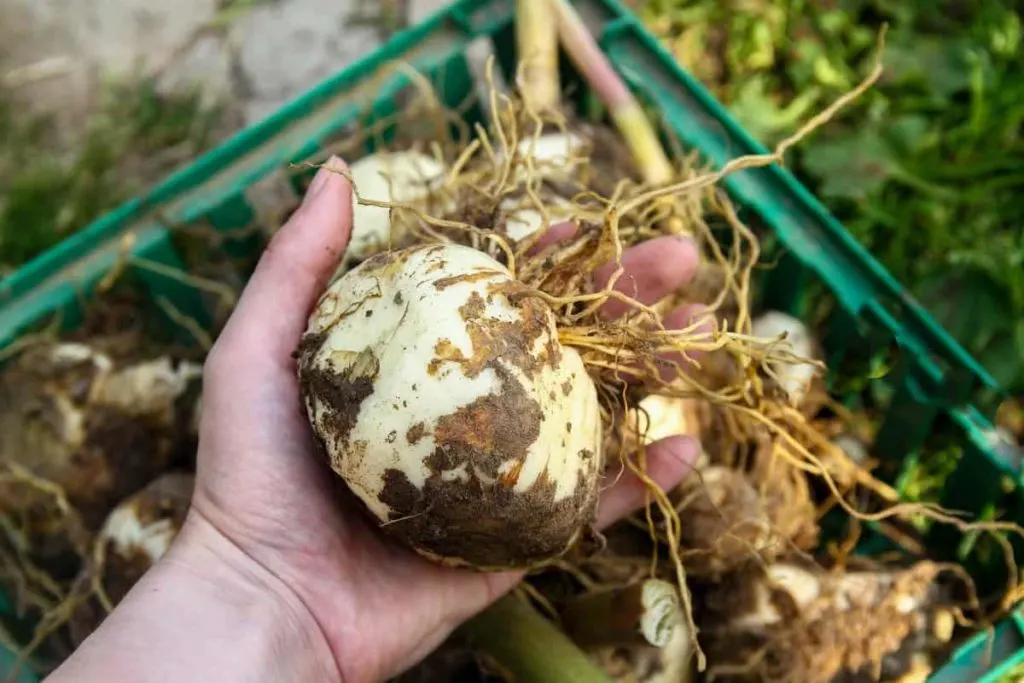
Winter is coming.
Are you worried about all the excess bulbs you didn’t get in the ground in time. Or perhaps your tender bulbs are your main concern, as they won’t survive the winter.
Bulb-lovers have all been there.
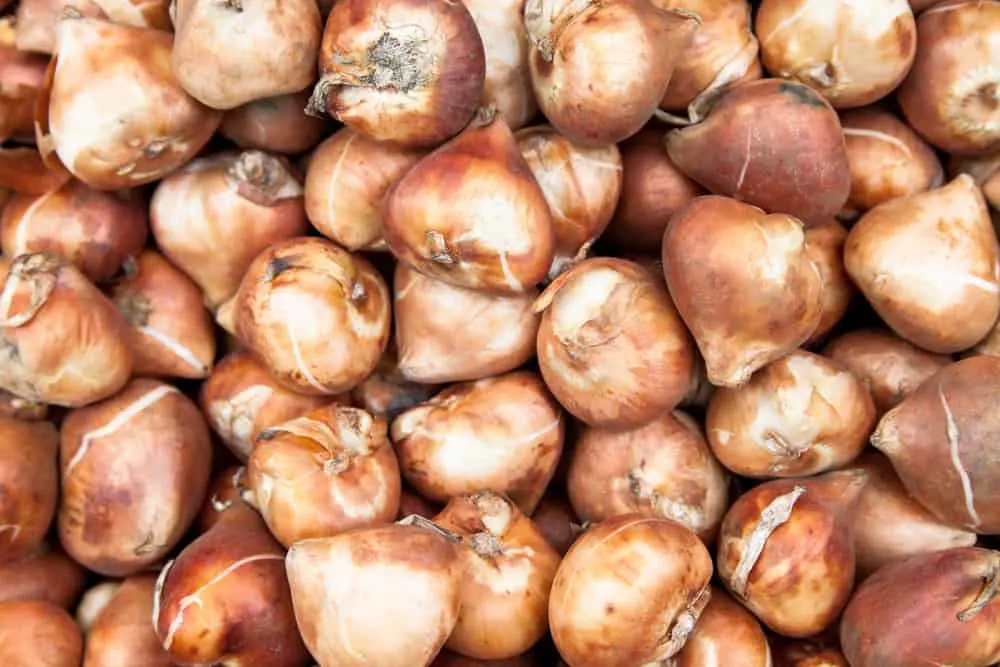
But don’t fear, there are ways to save and store your garden bulbs, whether they’re hardy or tender. Follow these simple and easy steps and they’ll be ready and safe for next spring.
Related Reading: 7 Gorgeous Spring Blooming Bulbs To Plant In Fall
Different Kinds Of Bulbs
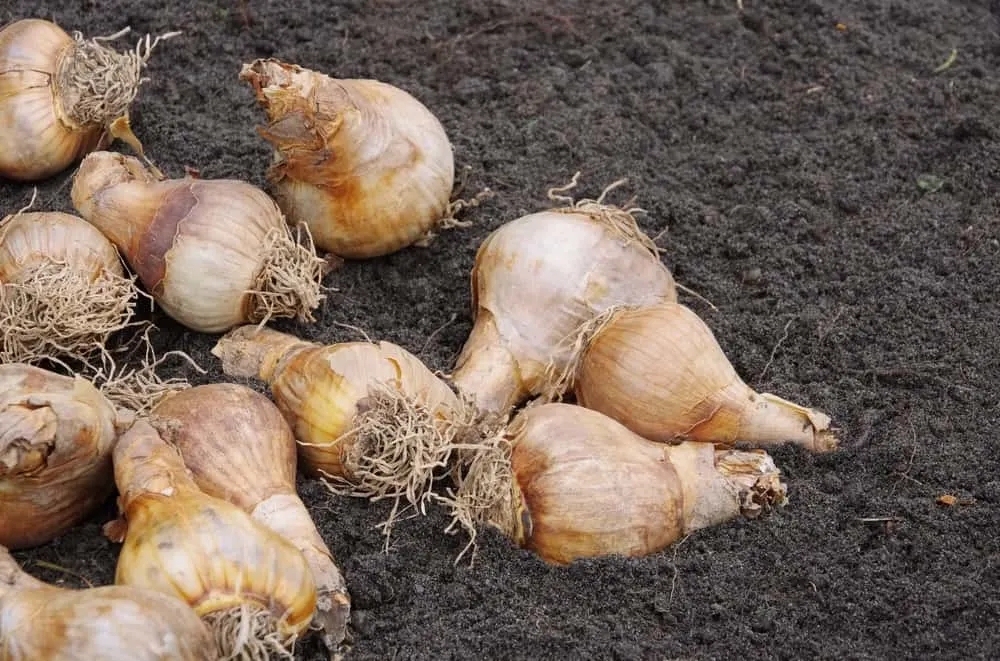
Before I get into the steps of saving and storing your bulbs, let’s have a quick bulb recap.
Hardy bulbs are those that withstand lower temperatures like tulips, daffodils, and alliums (onions), to name but a few. These tend to thrive in the cold winter soil. Their foliage may wilt, but the bulb tends to be fine.
Many gardeners do dig them up and store them though, especially in overcrowded gardens. They replant their bulbs in the spring to maximize yield the following year.
Tender bulbs on the other hand wither away in the cold, frozen ground. Dahlias, elephant ears, and canna lilies are great examples. The same goes for rhizomes, corms, and tubers. Tender bulbs must be saved and stored during the winter to protect them from the looming winter frost.
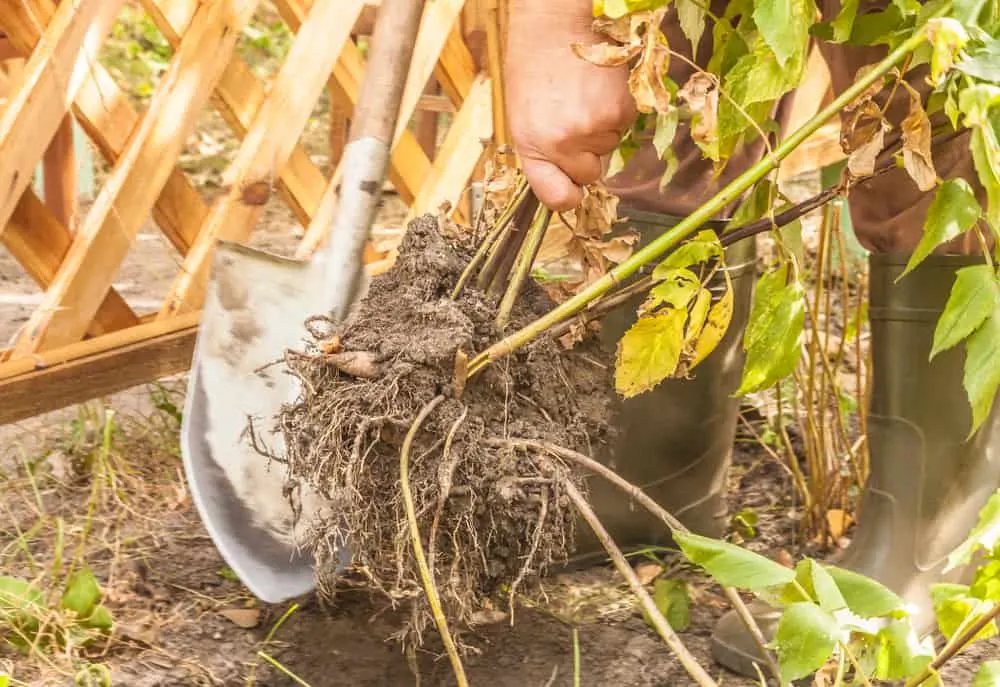
No matter the type, the saving and preparing process is the same. Storage, however, is a different story.
If you have hardy bulbs in pots, skip to the storage part. These can be stored as-is, soil and all.
Related Reading: 5 Summer Blooming Bulbs To Plant In Spring
Saving And Preparing Your Bulbs
Harvesting
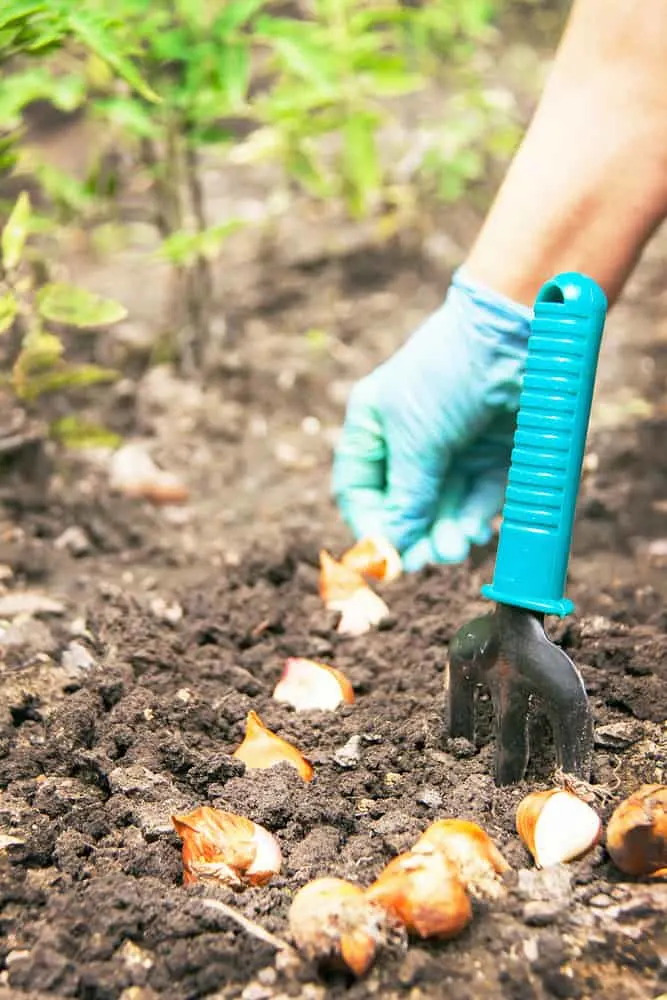
Firstly, of course, you’ll need to dig up your bulbs. Clear away the dying foliage and toss it into your compost heap. Leave some stem, just to make the digging process a little easier.
Using a digging fork, loosen the soil around your bulbs. Gently dig them out. Throw any damaged bulbs in the compost heap with the foliage.
Next, get rid of all the soil. Shake and rinse the bulbs clean. You can do this over your compost heap so no soil goes to waste. Don’t wash corms. If their papery covering gets wet, it affects the drying process. Instead, clean the soil off using your hands, or wait until it dries. The soil will dust off without an issue.
At this point, you’ll need to shorten those stems you left behind. Try not to damage the bulbs in the process.
Drying
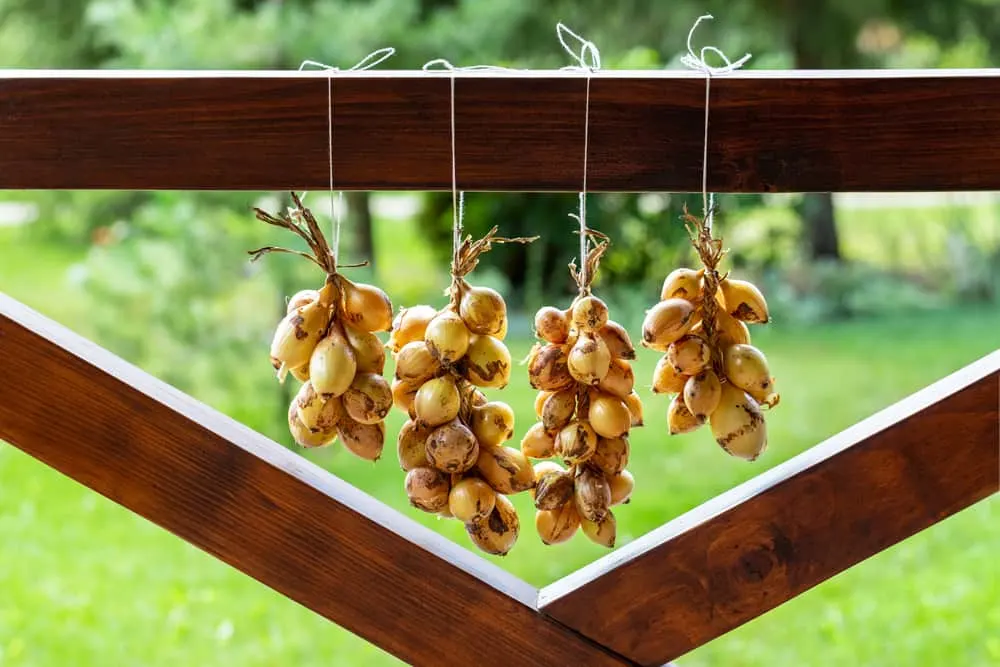
It goes without saying that only healthy bulbs should go through to the next stage. While cleaning, make sure to keep an eye out for any rot, disease, and insect damage. Discard these as you would with any damaged and diseased section of a plant (but don’t throw them in the compost heap to avoid spreading the problem).
You can easily air dry your bulbs inside. A garage or garden shed works well, as long as the temperatures are cool, not freezing. You can either place them on mesh screens or wrap them in paper towels or newspaper. It will usually take a few days for your bulbs to dry thoroughly.
Place them outside for a few hours a day if the bulbs are struggling to dry out.
They need to be as dry as possible before storing, or else they may rot, leaving you with nothing to replant in spring.
If you have corms, wait a few weeks before moving to the next step. Corms need a curing period before they can be packed and stored away.
Packing
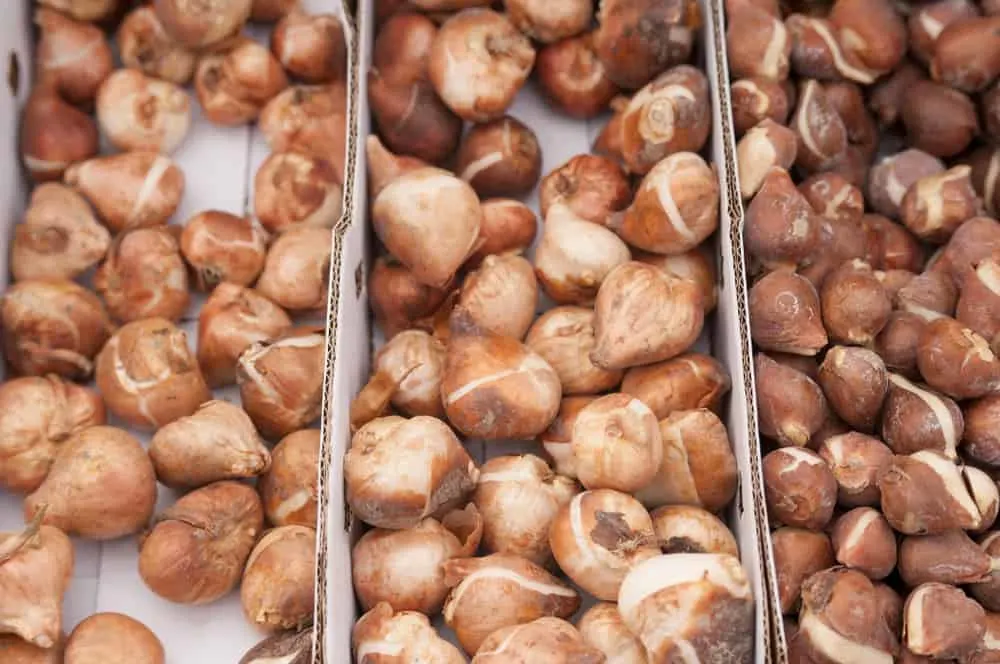
When preparing to store your bulbs, avoid plastics and other non-breathable materials, or else they’ll rot. It’s best to stick your clean dry bulbs in a cardboard box for winter. Meshing and newspaper work too.
If you opt for a nice cardboard box, place newspaper between your bulbs as you don’t want them touching each other. Coconut husk, sawdust, and vermiculite are great alternatives to newspapers.
Storing Your Bulbs
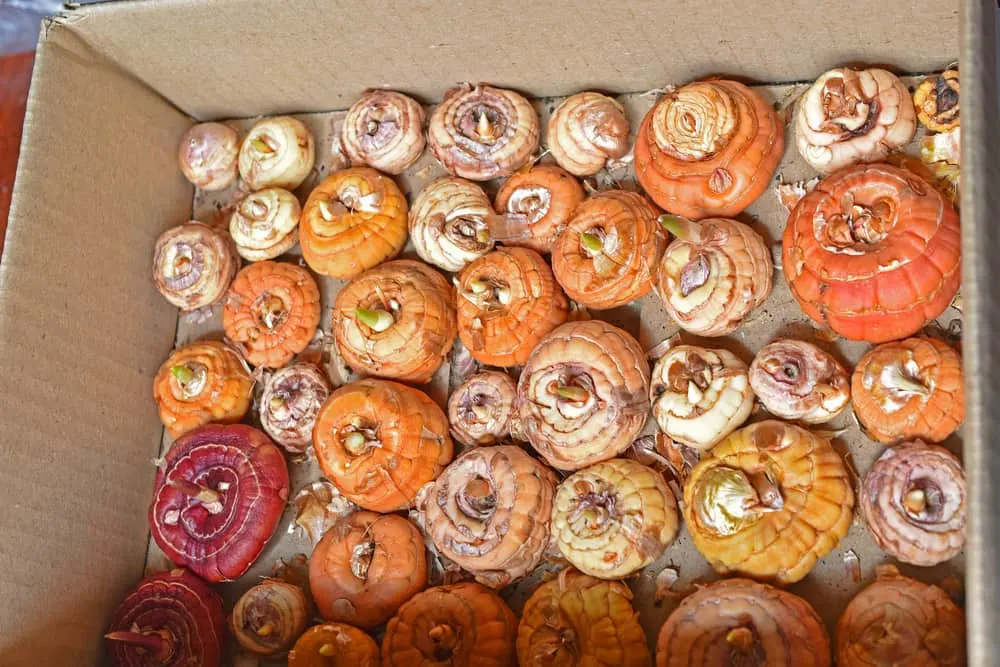
Tender bulbs need to be stored in a cool, dry place throughout winter. A cupboard works well. Your bulbs can last in a garage or basement so long as they’re not damp or too cold. Temperatures should be around 50F.
Hardy bulbs aren’t affected by the colder temperatures. You can store these in a cold garage or basement. A refrigerator is even better. Placing hardy bulbs in these colder conditions enhances your chance of them blooming. These bulbs typically need six to eight weeks of cold temperatures before they bloom.
Related Reading: How To Trick Bulbs To Bloom In Winter
Check on both your hardy and tender bulbs throughout the season, at least once a month. Make sure there are no spots or other signs of rotting. Throw out any bulbs that are mushy or damaged.
When Spring Comes
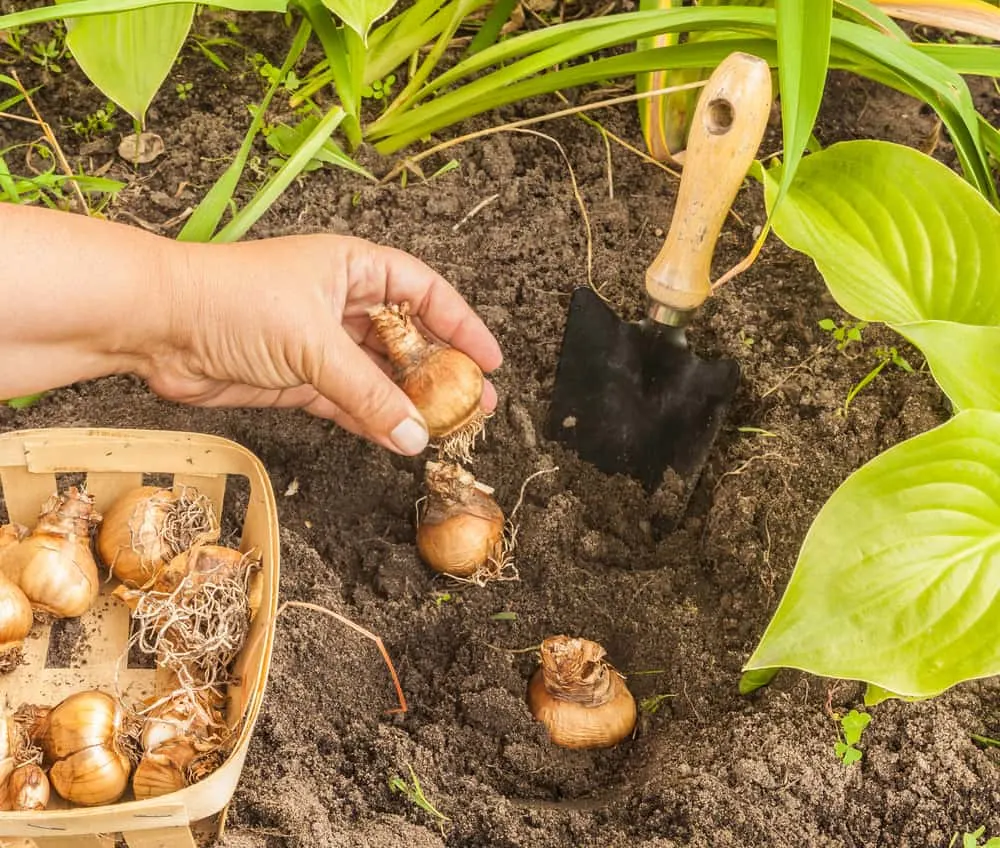
When temperatures start to climb, your bulbs come out of dormancy. Once the soil has warmed up, you can plant your bulbs. Unpack and plant your hardy bulbs just after the last frost.
Saving and storing your bulbs not only gives you more plants, but it also saves you money and stress.
Your favorite flowers and crops can be saved from the winter cold, and your garden come spring will look as wonderful as it did the year before.
